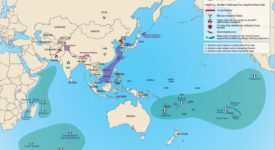The European Union continued its overall efforts to reduce the use of ozone-depleting substances (ODS) in 2017 and it has already achieved its goals with respect to the phase-out of these chemicals under the Montreal Protocol. This was reported by the European Environment Agency (EEA) ahead of the International Day for the Preservation of the Ozone Layer, which is marked annually on 16 September. The ODS are used in refrigerants, pharmaceuticals, agricultural chemicals and polymers.
Updated aggregated data reported by businesses throughout the bloc showed that last year, more ODS controlled under the Montreal Protocol were destroyed or exported than produced or imported – a trend started already in 2016. The import and production of the controlled chemicals started rising in 2016, although the emissions resulting from these processes dropped. This decrease in emissions suggests that improvements have been made in the control of emissions while the production – not controlled by the protocol – remained higher than the production of controlled substances. Yet, the new substances are less harmful to the ozone layer than the controlled substances.
Under EU regulation, businesses that produce these substances in the bloc, import them into and out of the EU as well as users of these substances are obliged to report their activities annually. Moreover, in addition to already achieving its target numbers on the phase-out of ODS, the EU is also reporting exempted, essential, and critical users of ODS. ‘The Montreal Protocol on Substances that Deplete the Ozone Layer’ – or briefly ‘Montreal Protocol’ – dates back to 1989 and its objective was the protect the ozone layer from depleting by phasing out ODS.







